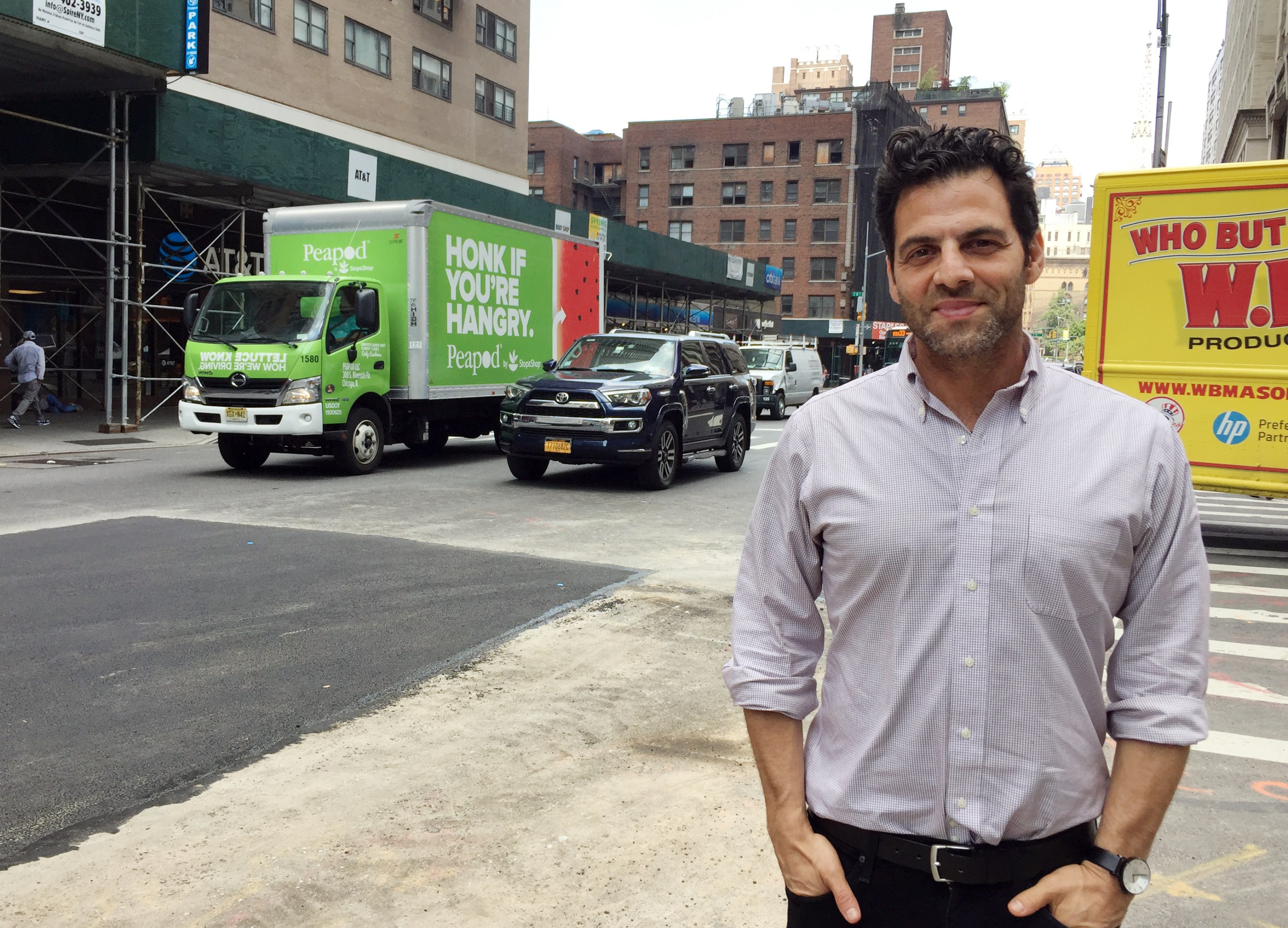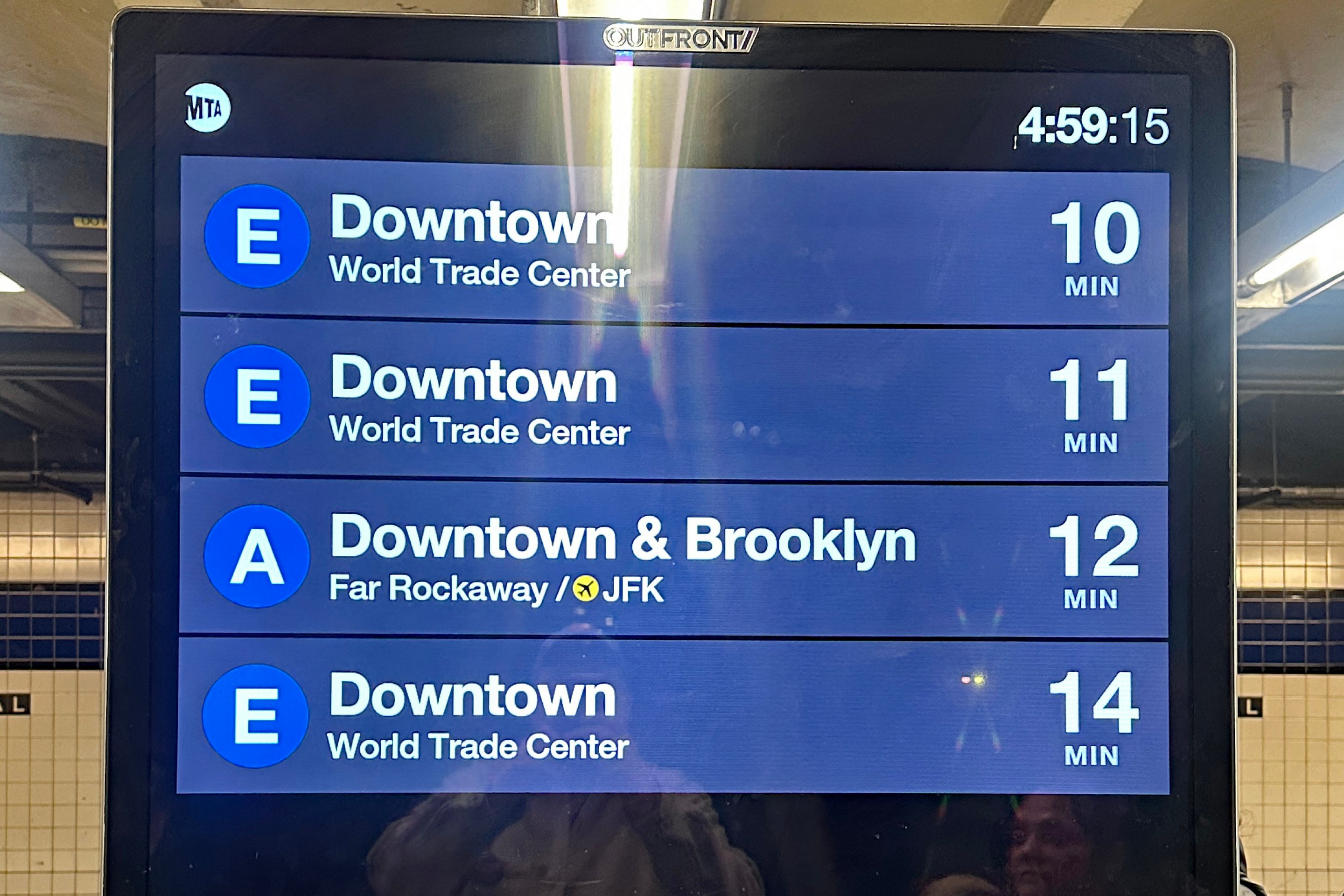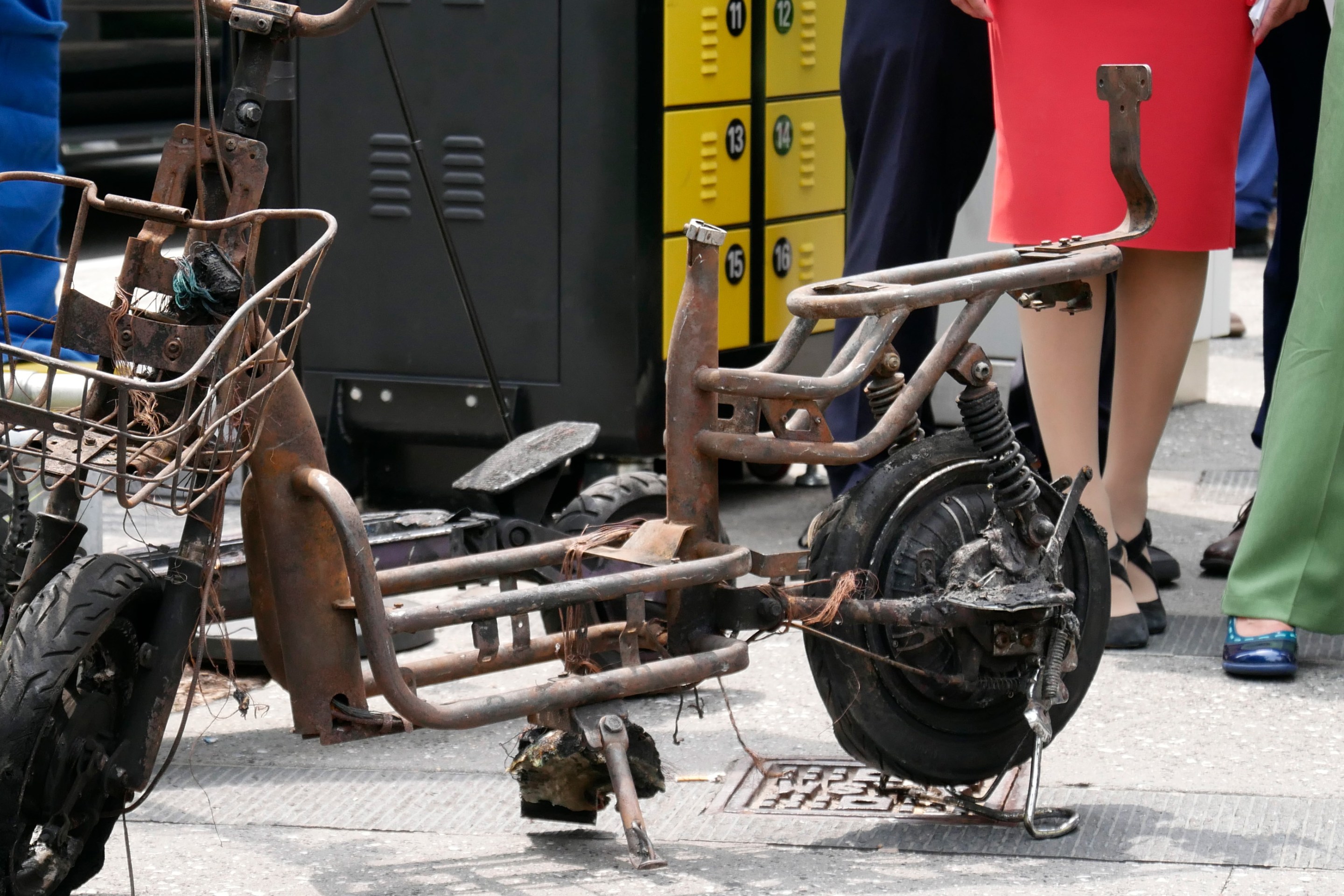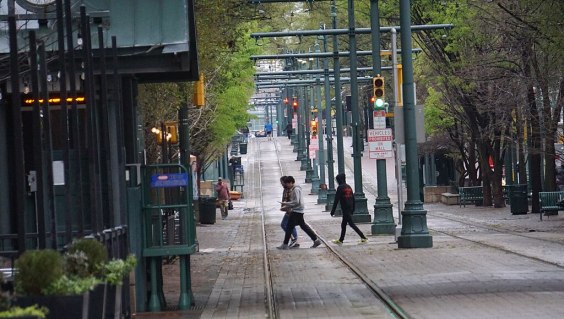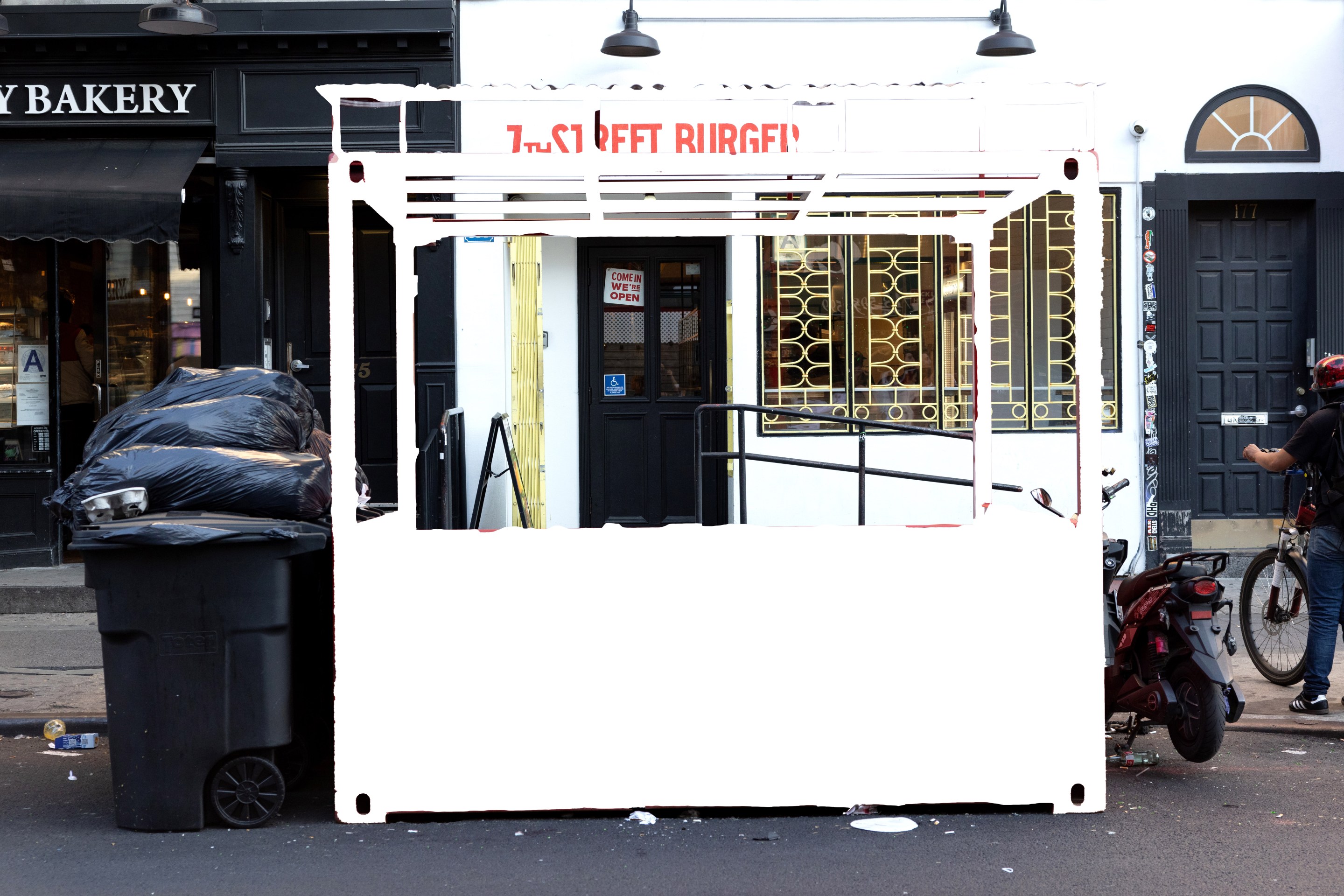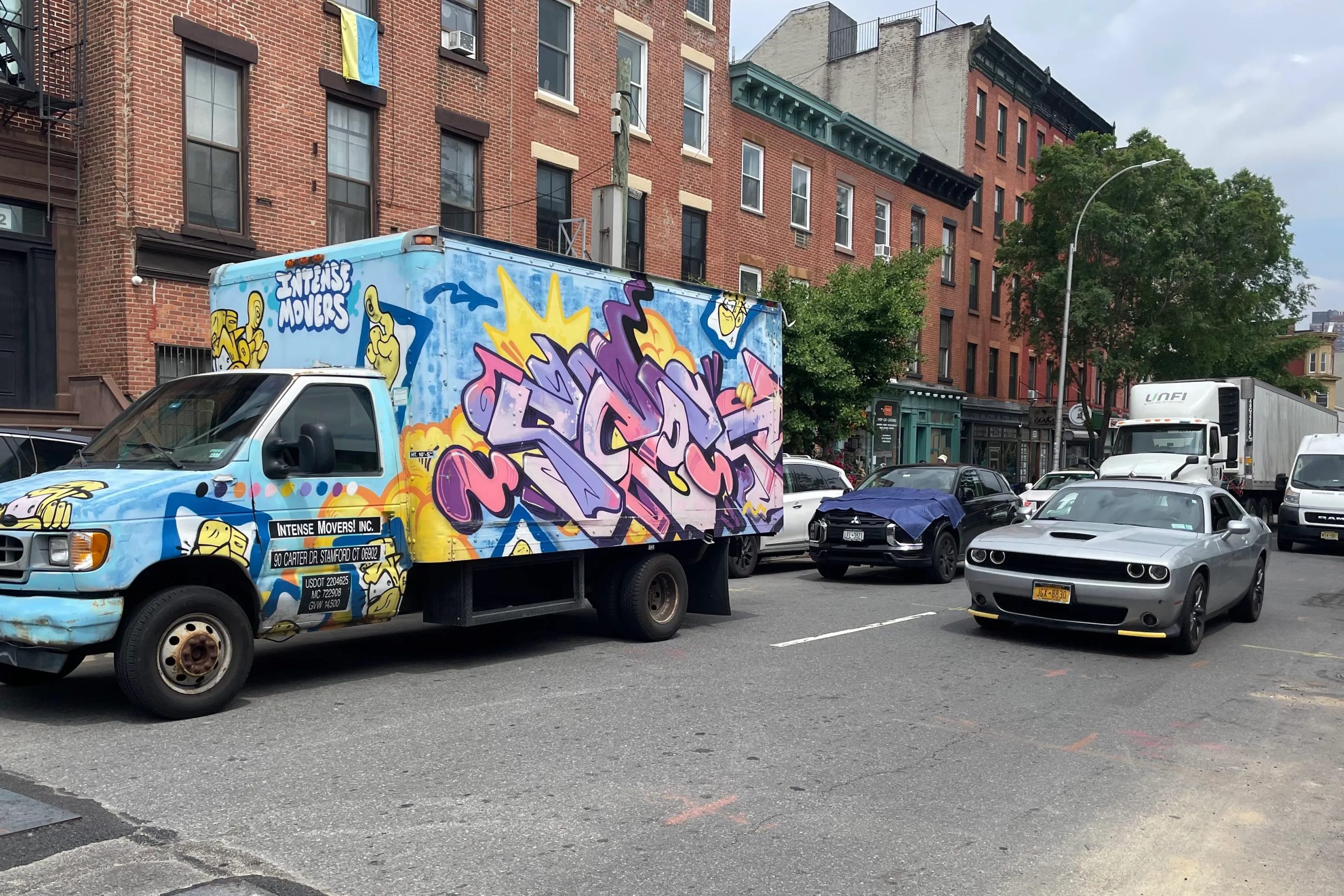Danny Harris, the incoming executive director of Transportation Alternatives, grew up on Upper West Side, learning to ride his bike in a schoolyard on W. 77th St. He now lives on the Upper East Side with his wife and two young children. In between that, Harris worked for Civic Entertainment Group, which created public-private partnerships New York parks, and for the Knight Foundation in San Jose, where he spearheaded placemaking in a city built for, and ruined by, the automobile. To get the measure of the new leader of the city's most important livable streets activist group, Editor Gersh Kuntzman sat down with the 40-year-old Harris at a diner on Lower Broadway. Harris officially starts on Sept. 3, so he was reluctant to answer the toughest questions, but he talked with Kuntzman on the same day as the 18th cyclist of the year was killed, so there was plenty to discuss. This interview has been edited only for length and clarity.
Gersh Kuntzman: So are you a velvet glove or a steamroller? What is your approach to this organization?
Danny Harris: For 46 years, TA has been at the forefront of this work and has been able to play the inside and outside game. And when you see what's happening now, you need to figure out how to empower communities to fight for what's required not just in the community but for the city.
GK: Right, but those communities are often led by people who don't recognize that cars are anathema to urban life. How do you deal with that? That's the biggest challenge in New York lately.
DH: Well, you have to start with a different question: What are we actually trying to achieve?
GK: OK, let's start with that question: What are we actually trying to achieve?
DH: If we are simply looking at mobility and bicycle lanes, in a way, we are not thinking about the entire problem which is our city was not built for people. The systems inside the city are not integrated to think collaboratively about everything from data to budgeting to design to policy. The reason people go to Copenhagen isn't just to see the bike lanes, but it's because they have an integrated approach called Public Life that organizes and measures everything in that city. So when they're thinking about their metrics about income inequality and sustainability, they are all tied to data. But the thing we should not do is to treat protected bike lanes like they are the Seven-Minute Abs of urban fitness. We need to elevate an integrative approach to try to heal the city, that looks at the intersection of public health, mental health, mobility, dignity, safety, so we need to build these things in as a starting point with other elements across the city that come together. In New York, every part of the transportation system is broken. People think of New York as a zero sum game — you take away this to give to that — but in a way, we have to a broader conversation about what we want to accomplish in this city.
GK: Wow, that's not where I'm at at all right now. Everything you just said is New York City government, 2050 — or really 3050 — given where we are now. Certainly you know that the NYPD and DOT don't even discuss things like, "Hey, we've just redesigned a roadway with a bike lane that will become more dangerous if drivers double park on it. Can you enforce that more?" And then you see cops parked in the bike lane the wrong way. So that suggests a lack of communication on the most-basic level. Literally, the 1800s level. If you said what you just said before to a member of city government, that person would think you had come from the future in a time machine of your own making, Mr. Wells. So how can we fix that?
DH: You started with a conversation about the community and that's where I'm starting. This work has to be a balance of anger and hope and vision. And that vision is, "What are we ultimately trying to achieve when we get all this?" So New York has these incredible moments. You can go to car-free Central Park or Prospect Park and it's a utopia. And you see what happens on the High Line or Brooklyn Bridge Park where people are experiencing something delightful. But then you wonder: can you bike to these places safely? Can you walk between them with a stroller or if you're disabled? When you look at what works with creative placemaking, you want to create a system that residents not only don't want to give back, but they actually get angry about the details. Here's an example: In San Jose we reimagined an underutilized park — and I got a phone call from a councilman at 11 at night and he said, "How could you do this and not have a local beer on tap?" It wasn't, "What the hell did you do to my park?" but, "You would do this and not have a San Jose beer on tap?" That's a win. So when we talk about the notion of mobility, what are we trying to elevate? We know that mobility ties to income inequality sustainability, quality of life, but right now we're fighting trench warfare.
GK: I'm going to say this over and over because I guess I'm one of the trench warriors, but this city is run by an entitled elite, whether it's the New York Post likening cyclists to white supremacists, or the elected officials who not only don't share the vision you are discussing, but are impediments to it. The fight on the ground can be dispiriting to activists. How do you keep the anger at the forefront?
DH: We are meeting on the day when the 18th cyclist was killed. Do you want to be angry? You have 18 reasons. And not just angry, but livid. We are not prioritizing people. You can die while living in New York City: Walking biking, living. The city needs to do more to protect its citizens. But this is also built on decades of bad planning and lack of forward thinking. The activists always need to be at the center of our movement. We need to empower them and give them more resources. and expand the network to go into other neighborhoods and to be more reflective of what New York looks like. If you look at the bike plan they put out the other day, we want it to be more diverse.
GK: The map they put out was for 2021 and 2030, and it was the kind of thing that the mayor might have presented in 2014. What did you ultimately think of the plan? We portrayed it as a minor expansion and a major disappointment. What would be the TA take under Danny Harris?
DH: I formally start on Sept. 3. But the plan represents progress and it's helpful, but it falls short. If you want to create the fairest big city in America, you have to start by creating the safest big city in America. And what that means is that you start with the fundamental understanding of individuals of all ages and abilities, from my two children under the age of 3 1/2 or until recently my 95-year-old grandmother, who could age in place and be self-sufficient, but still felt afraid to cross the street. So if you really want to get there, it requires significant resources and a broader vision of what is truly possible. And you have to make difficult decisions, perhaps against community boards, that says our priority is people. In San Jose, we worked to create a better bike plan so that there will be a mode shift of 15 percent by 2040.
GK: That's more ambitious than our mayor, who moved the goalposts back to 10 percent by 2050.
DH: San Jose was built on the 11th commandment: Thou shalt park for free. It's 188 square miles of suburban development. We were fighting to get sidewalks, let alone bike lanes. New York is great. Think of the infrastructure here. We don't only have good bones, we have good muscles, good veins, we have a brain that we can make these decisions. We are not starting from scratch. We should be able to elevate and push the model of what can be.
GK: On Sept. 3, you're going to be on the phone with the mayor and you can say, "Well, nice try on the 'Green Wave,' but here are some things I need." What are those things?
DH: My first step is listening: Working in and across the organization. Working with the activist groups. Meeting everyone across the five boroughs. Meeting as many people as there are hours in the day to get a sense of where we are in transportation right now and where TA can have the most amount of impact and drive the change that we want to see. To build a place for people starts with getting an understand of what people want and that starts with getting an understanding of people who have been on the forefront of fighting for TA. I want to make sure that my conversations with the mayor are informed by where we believe we need to go next. So I'll punt on that question for now.
GK: The TA activists committees will be eager to talk to you. They do feel that the TA mothership doesn't necessarily have the same agenda that the activists have been pushing, substituting one fight for one that the activists had been working on. Beyond TA, as you know we are still fighting this car culture to the extent where an employee of the City of New York, who works for the mayor, was quoted at a community board meeting saying that Vision Zero, her boss's signature issue, is a "joke" and that pedestrians "deserve to get hit" if they walk in a distracted manner. And we can't get the mayor to do anything. And we can't get the Borough President of Queens, who will soon be the district attorney of Queens where she will be prosecuting people who hit pedestrians, to do anything. As important as we take transit, cycling and pedestrian issues, the loudest voice in any room in New York City belongs to entitled drivers, who are the minority of city residents. That's a battle that we cannot win with this mayor, which fuels a lot of the rage that your members and your activists feel. How do you handle that?
DH: If you look at the mayor's track record in terms of where he started and where we are at right now, obviously there has been a lot of progress in terms of getting Vision Zero to a place where there has been an incredible amount of change, even if it's in crisis right now. A lot of hope was attached to it and there have been achievements. We are having conversations about urban planning and the housing crisis, and that's happening in cities. But the truth is we need to have that conversation nationally. The United States is struggling with this dependence on cars. We have 624,000 deaths since 2000 and 30 million injuries. Ninety-four percent are from human error. And now shiny new technologies are coming in and selling us a new bill of goods about the future: Hyperloop, the Boring Company, shared mobility, mixed mobility. Where are the leaders standing up and saying, "We've seen this before. We need to put people at the center and then build these technologies around that."
GK: Simply put: You don't need tech to fix the street. You need fewer cars.
DH: You need fewer cars and a completely different approach to how we imagine our cities.
GK: But de Blasio has done the low-hanging fruit of Vision Zero, which is protected bike lanes, lead pedestrian intervals, etc. But his failure to make the hard decisions — like car-reduction strategies or making sure buses move because he's ticketing every car in a bus lane or congestion pricing, which he was very late to embrace — show that this is someone without the full vision of Vision Zero. And that's why we say, "Let's have one car-free neighborhood. Start with DUMBO; it's a six-block cul-de-sac filled with tourists walking around taking pictures. Just close it to cars. It would be more livable and there would be fewer injuries." He's resistant. That's where my rage comes in. The mayor has a signature policy yet won't do what needs to be done. Will you address that with him?
DH: I will go back to this notion of equity and you look at the effect of mobility on equity. There are studies that show commute time is the single most important factor in escaping poverty. Time. But however you want to enter this conversation — say you want to enter on sustainability. OK, we understand the impact of the combustion engine on climate change, If you want to talk about equity, we see how access to transit elevates people out of poverty by giving people options. If you want to talk about biking and small business, go to Portland. The point is when you are able to break these down by issues, we've seen how they work in other places. This isn't naive visionaries. this is built on data.
GK: But you talk about data and you talk about facts. Ever go on talk radio? You'll find a retrograde reaction to basic facts, such as the fact that protected bike lanes make the roadway safer for all users and do not increase travel times for drivers. You can't even say stuff like that. There is a huge battle over the hearts and minds of people who don't accept basic facts.
DH: Unfortunately, that's not unique to New York right now. It's where our nation is right now.
GK: What will be your approach? Are you an ambassador for our positions or the inside City Hall lobbyist? If you go to a community board meeting in Queens, you are the devil. They won't listen to you.
DH: Whether you are getting in your car in Bay Ridge or getting on the 6 train uptown, how many New Yorkers are enjoying their experience of moving across New York?
GK: Probably only some cyclists.
DH: And only the ones who feel protected. But who is actually thriving while they're moving? Very few people. New York is the greatest city in the world because you can live without a car. But for whom is it working? Even if you are incredibly wealthy and take a helicopter to the Hamptons, you still have to get crosstown to the helipad. So this system is broken for everyone. And God forbid, you are a child or you are elderly or have limited abilities or walking with strollers? It's not working. We may be the devil when we talk about bike lanes, but we're not the devil when we tell them, "Every day you leave your house and you're yelling at everyone around you when you're driving, well, that's not a great experience either." Our goal is that this is not a zero-sum game and we need to reduce the amount of stress and increase the amount of efficiency. Whatever you think about a place like Copenhagen, they figured out it's all about ease. People are lazy, and if you make riding a bike or walking the easiest way to get from Point A to Point B, they'll do that. It's not because they're environmentalists or because biking is cool or because they're from a certain socio-economic class. The city prioritized that mode of transit to make it easier to for them to get around. They believe if you create the infrastructure around bicycling, like showers or bike parking, you create a mode shift that changes behavior and people won't even think about it.
GK: We have not been able to lift the mode share of bikes that much. It's because people don't feel safe. And New York City's transportation is a zero sum game in one way: You have a 60-foot-wide street and you do have to divide it up a certain way. Now, DOT Commissioner Polly Trottenberg says she wants to create more space for cyclists or pedestrians, but she wants to do it in a way that does not reduce the level of service for the automobile. And we think that's a misguided notion. It is a zero-sum game: Drivers need to lose more of the public space they currently occupy so that transit works better and cyclists and pedestrians — the less dangerous, less environmentally impactful forms of transportation — are safer. So it is a zero-sum game.
DH: We have a limited amount of space on the street, so if you look at how we got to this point, the size of roads, we start in a broken place that is a zero-sum game. We have prioritized everything for cars. And the worst part about New York is we give these small invitations to people. Take a thing like a sharrow, which is an invitation to ride your bike somewhere, but a box truck will cut you off. You look at the Brooklyn Bridge and you have a bike lane that is an invitation to ride, but it's filled with pedestrians. Or you walk on Eighth Avenue and people are spilling into the street, but there's a false invitation there that you can walk safely. And even for cars, there's a false invitation that you can get anywhere on these roads, but you're stuck in gridlock.
GK: Sharrows are the chevrons of death. But let's focus on the mayor. TA has asked the mayor to go on a bike ride with them. We want him to have less of a windshield perspective so he can see the danger done by one double-parked truck or one door. He's dismissive. But will you push?
DH: I would welcome the opportunity to take a bike ride with him, wherever he wants to go. He clearly has shown a commitment to do this work, so now it's about how do you elevate what's truly possible? In San Jose, I said we could solve the transportation issue if every elected official had to take transit. In New York, it's riding a bike or taking a stroller on the subway. There is a fundamental disconnect. Unless you experience it every day, it's just one thing on your list of many priorities.
GK: Yeah, but the mayor was the one who led the crackdown on the community of delivery workers, the lowest paid, most exploited workers. You mention communities. Well, those workers are a community. And there is a community of small business owners in Sunnyside, Queens, that thinks the bike lane is hurting their business, when in fact it is not. So it's about how you define communities. And that's why we call upon the mayor to ride a bike or ride transit to experience those communities. The police commissioner does not take a proactive approach against his officers in bike lanes. Have you spoken to the police commissioner yet?
DH: No.
GK: The mayor?
DH: No.
GK: Polly Trottenberg?
DH: Yes, she called to congratulate me and we had a nice conversation. And we'll go from there. We have to figure out these elements together. We can't be a reactive city. So how do we get ahead of that to put a system in place that allows us all to thrive instead of this notion that we are at 18 dead now. What unfortunate opportunity will get unlocked if we get to 20 or 25? That's not what we want.
GK: We have a city with 225,000 crashes a year, 610 a day, 123 crashes per day causing injuries. The danger is the road itself. Those numbers should boggle the mind of all our leaders, yet don't.
DH: People keep driving. Some of them perceive it to be their only option.
GK: What fuels you in this fight? I will be honest with you: My fuel is rage. Constant, friendship-breaking rage. What is your fuel?
DH: I have ridden a bike ever since I was little. And I was always alone. And people would yell at me or door me. But I was always viewed as a radical. But I don't want to be a radical. I just want to get from A to B safely. And then there were these experiences like working at the Knight Foundation and seeing how public health, mental health, civility and civic engagement were all broken because the built environment was constructed around the automobile decades ago and we could not get out of the habit. And then we have childhood obesity and people don't know their neighbors. It's all rooted in the fabric of how people live. Plus, I got hit by a car. I was dropped off by a taxi and was waiting to cross the street, and the taxi who dropped me off backed over me. So distracted driving is something that fuels me. And if you go to Copenhagen or Amsterdam or Guadalajara or Tokyo, you see how great a city can be when mobility works for everyone. But I live in the greatest city in the world — why can't I have that?
GK: There's an election in November, 2021.
